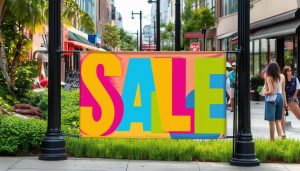Double-sided banners play a crucial role in enhancing events and creating memorable experiences. These versatile marketing tools not only add to the visual appeal but also engage the audience, making any event more dynamic and interactive. Whether it's a corporate event, a trade show, or a community festival, banners can significantly elevate the atmosphere and leave a lasting impression.
[Click to read more/less]
 Visual Impact and Engagement
Visual Impact and Engagement
Two-sided banners contribute immensely to the visual appeal of events. Their ability to display information on both sides maximizes visibility and ensures that the message reaches a broader audience. This dual exposure is particularly beneficial in high-traffic areas where attendees are constantly moving around.
Moreover, banners with two sides draw significant attention and engagement from the audience. Their strategic placement can guide attendees, provide essential information, and create focal points that enhance the overall event atmosphere. The dynamic visuals and compelling messages on these banners can captivate the audience, making the event more memorable and impactful.
Applications and Uses
- Trade Shows
- Corporate Events
- Community Festivals
- Product Launches
- Conferences and Seminars
- Sporting Events
- Weddings and Private Parties
- Retail Promotions
The versatility of banners makes them suitable for various settings. For instance, at trade shows, they can be used to highlight booth locations and special offers. In corporate events, they can reinforce brand identity and provide event schedules. At community festivals, they can display maps and activity schedules, ensuring attendees are well-informed and engaged.
Examples of successful use include:
- At a corporate event, double-sided banners can display the company’s mission statement on one side and the event agenda on the other.
- During a product launch, one side can showcase the new product while the other side highlights its key features and benefits.
- At a wedding, one side can welcome guests while the other side provides a timeline of the day’s events.
Double-sided Themes and Ideas
- Brand Colors and Logos:
- Use company colors and logos to reinforce brand identity.
- Verbiage: "Welcome to [Company Name]'s Annual Gala."
- Motivational Quotes:
- Incorporate inspirational quotes that align with the event's purpose.
- Verbiage: "Innovation Drives Success."
- Event Schedules:
- Display the event schedule for easy reference.
- Verbiage: "Today's Agenda: Networking, Workshops, Keynote."
- Directional Signs:
- Guide attendees to different areas of the event.
- Verbiage: "This Way to the Main Hall."
- Social Media Handles:
- Encourage attendees to follow and engage on social media.
- Verbiage: "Follow Us @EventName for Live Updates."
- Sponsor Recognition:
- Highlight event sponsors and partners.
- Verbiage: "Thank You to Our Sponsors: [Sponsor Names]."
- Photo Opportunities:
- Create designated photo spots with engaging backdrops.
- Verbiage: "Capture the Moment! #EventName."
- Interactive Elements:
- Include QR codes for interactive content or surveys.
- Verbiage: "Scan Here for More Info."
- Event Highlights:
- Showcase key highlights or special features of the event.
- Verbiage: "Don't Miss Our Keynote Speaker at 2 PM."
- Safety Information:
- Provide essential safety guidelines and emergency exits.
- Verbiage: "Safety First: Please Follow These Guidelines."
Design Tips for Double-sided Banners
Creating visually appealing and impactful double-sided banners requires careful consideration of several design elements. Here are some tips to ensure your banners stand out:
- Color Schemes: Use colors that align with your brand or event theme. Ensure there is enough contrast between the background and text for readability.
- Font Choices: Select fonts that are easy to read from a distance. Avoid overly decorative fonts that can be hard to decipher.
- Graphics: Incorporate high-quality images and graphics that are relevant to the event. Ensure they are not too cluttered and complement the text.
- Consistency: Maintain a cohesive design throughout the banner. Use consistent colors, fonts, and styles to create a unified look.
- Message Clarity: Keep the message clear and concise. Avoid overcrowding the banner with too much information.
- Alignment: Ensure all elements are well-aligned and balanced. Proper alignment enhances the overall aesthetic appeal.



